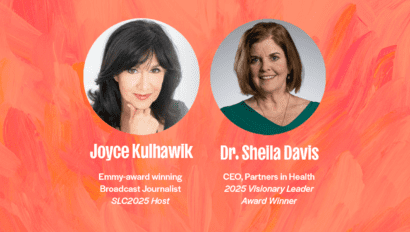Research & Insights
Becoming Aware: The First Step Toward Inclusive Leadership

Recently I’ve been thinking a lot about how our biases can get in the way of inclusive leadership. We all have biases – they may be implicit, unconscious or even conscious – and they all impact our ability to make good decisions, treat people equitably, and ensure that everyone is able to contribute to their highest potential. Awareness is the first critical step to minimizing the negative impact of those biases. That’s why our first level of The Work of the Inclusive Leader™ is Becoming Aware.
Awareness is Personal and Systemic
Becoming aware happens both on an individual level and systemically. As a leader, it’s critical that I understand the biases that are part of how I see the world, as well as the biases that are built into the systems that govern how work gets done. The more I’m aware of how these biases operate, the more I’m able to minimize their impact, and the stronger I become as a leader.
Below are the top three benefits I’ve identified for a free webinar series I’m hosting this fall called Inclusive Leadership in Action. I’m looking forward to learning more from our panelists and participants:
- Making better decisions: by understanding how bias may be shaping my thinking, I’m able to think more clearly and decide based on objective criteria and facts. For example, a very senior executive who managed a global team once told me that he realized he was unconsciously judging people based on their ability to present in English. He realized he was missing or dismissing a lot of important information and started asking for a translator to be present.
- Treating people equitably: by recognizing my biases about certain groups or social identities, I’m more able to ensure that I am treating people in those groups fairly and equitably. That not only benefits my colleagues but also impacts how I’m seen as a leader.
- Ensuring everyone is able to contribute: perhaps the most important activity of a leader is ensuring that the people they lead are able to contribute to their highest potential. By being aware of my biases, I’m more able to create the conditions that allow my colleagues to flourish, including fostering psychological safety, making sure all voices are heard, and ensuring equal access to growth opportunities.
Beyond the First Step
Although becoming aware is a critical first step, it doesn’t move the needle on its own. Inclusive leaders need to take deliberate actions to partner for success, advocate for belonging, and make systemic change. I’ll discuss those actions in more detail in future blog posts, as well as in our upcoming Inclusive Leadership in Action webinar series.
Interested in learning more? Here are some resources:
Blindspot: Hidden Biases of Good People by Mahzarin Banaji and Anthony Greenwald
The Person You Mean to Be: How Good People Fight Bias by Dolly Chugh
New! The Inclusive Leader’s Playbook: This easy-to-use guide offers a wealth of tips and techniques for fostering a mindset of inclusion and creating a culture of equity in your organization. Available now on Amazon.com.
Watch the recordings from our Inclusive Leadership in Action Webinar Series:
Becoming Aware [Recording & Moderator Insights]
> How to get clear on your own values and blindspots, and learn more about the experiences, needs and concerns of others.
Becoming an Ally and Upstander [Recording & Moderator Insights]
> How to partner with others to support their success, and create conditions that allow everyone to feel that they belong.
Becoming a Change Agent [Recording & Moderator Insights]
> How to sponsor people from underrepresented groups and make changes in how work gets done so that everyone has equal access to opportunities.




